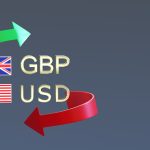Asian equities increase, with the Nikkei reaching a 33-year top. on hope for a debt ceiling on US debt ceiling will is likely to be resolved
Asian stock markets upbeat on Debt ceiling and tech sector earnings
Broader equities increased on Monday. As investors welcomed a tentative agreement between U.S. legislators to raise the debt limit and prevent a default. Japan’s Nikkei soared back to almost 33-year peaks on increased risk taking.
Broader markets were led by the Nikkei 225, which increased 1.4% to reach the highest mark since July 1990. Advances were mostly led by large-cap chipmakers and banking sectors. While technology firms kept profiting from forecasts that demand will be pushed forward by interest in artificial intelligence.
Advantest Corp (TYO:6857), a vendor to Nvidia Corporation (NASDAQ: NVDA), increased by 5.2% to a record level. It was the Nikkei’s best performer. The larger TOPIX increased by one percent.
The top senators from both the Democratic and Republican parties announced that they had only now agreed to waive the spending restriction.
Almost a week before the deadline for a U.S. default. The leading Democratic and Republican senators said they had tentatively agreed to lift the spending cap. This news caused other Asian equities to rise. Congress will now vote on the accord this week, while several decision-makers have still expressed their displeasure with it.
Nevertheless, the deal assisted in putting an end to weeks of heated debate. Which had alarmed risky markets over the possibility of a U.S. default. A default is predicted to have disastrous effects on the world economy, leading to a recession in the US and wrecking the debt markets.
The Taiwan Weighted index increased 0.9% while Australia’s ASX 200 index increased 1.1%, The latter one also benefiting from increases in major chipmakers.
Although Singapore-traded futures for India’s Nifty 50 index suggested an encouraging open. Philippine stocks set the pace for advances in risky Southeast Asian exchanges.
Due to ongoing worries over a sluggish economic recovery in the country. Chinese stocks trailed behind those of their counterparts. While the Shanghai Composite was only marginally positive. The China’s blue-chip Shanghai Shenzhen CSI 300 index decreased by 0.4%. Following a long weekend, the Hang Seng index in Hong Kong decreased by 0.2 percent.
The Chinese manufacturing as well as service sector statistics for May are the main topic of discussion this week. Following April’s lackluster results sparked fears about Asia’s largest economy’s sluggish development.
Asian Fx Markets
The anticipation that the U.S. Fed will raise interest rates in the future helped the dollar hold steady on Monday. While the disclosure that a debt ceiling agreement had been reached attracted some safe-haven buyers away from the currency.
In early Asian trading, the U.S. dollar reached a new 6-month top of 140.91 JPY. While giving back a few of the increase to close at 140.39 yen. In relation to the Japanese yen. The pair was on track for a monthly gain of approximately 3 percent.
The yen’s recent slide has been fueled by increasing U.S. Treasury yields as speculation about the sustainability of higher rates of interest in the US grows.
Inflation climbed and consumer spending rose more than anticipated in the US in April, according to data released on Friday. Contributing to the indications of a still-viable economy. The euro increased 0.02% to $1.0735 vs a US dollar, while pound decreased 0.01 percent to $1.23495.
According to Ray Attrill, head of FX strategy at National Australia Bank (OTC: NABZY) (NAB), “If the US currency continues the upward trend we’re currently noticing. It appears it’s going to rely on primarily employment info. The mean salary inside Friday’s payrolls reveal. But clearly the release of CPI prior the Fed also.”









